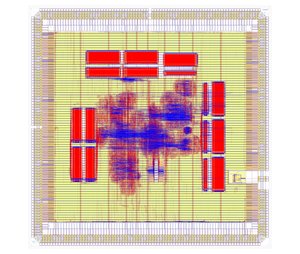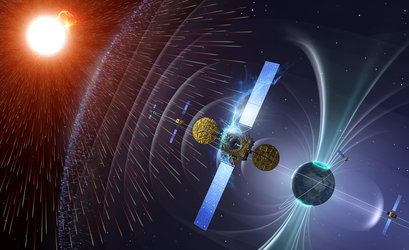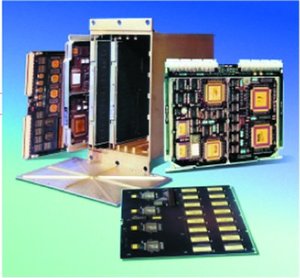LEON: a new recipe for chips
How to go about designing a microprocessor? The first step is to think about what it needs to do, in this case serve as a general purpose processor for space-based computer systems.
The next, having selected the SPARC open standard to work within, was to code the instruction set defined by this standard into a text-based description suitable for translation into an electronic circuit.
“Coding is performed using a hardware description language called VHDL which resembles a software programming language but has specific features to describe an electronic circuit,” Roland explained.
The resulting description contained several thousand lines of code: the LEON2-FT VHDL IP core. This VHDL code could then be simulated on computers, to validate it was operating as intended in advance of producing any hardware. A reduced version of the LEON IP core was distributed to the user community to obtain crowdsourced debugging tips.

“The next stage was then to physically translate that code to create a test board hosting a programmable chip called a ‘field programmable gate array’ (FPGA) where the LEON design could be put to work and tested.”
The reprogrammable nature of the FPGA allowed different design configurations to be evaluated before deciding on a definitive version for the final (and expensive) chip manufacturing, when the microprocessor design is etched onto semiconductor chips.
Into the nanoworld
Conservative space technology tends to lag behind its faster-moving terrestrial equivalent: the LEON2-FT is etched to a resolution of 180 nm, while the forthcoming Next Generation Microprocessor will go down to 90 nm or even 65 nm. For comparison, Intel’s latest CPU is around 32 nm.
These 90 nm and 65 nm technologies, while available in the commercial world for many years, are currently being validated for use in space through a pair of ESA activities called the Design Against Radiation Effects (DARE) and Deep Sub Micron (DSM) initiatives.
This descent into the nanoworld throws up fresh design challenges – such smaller technology is more sensitive to Single Event Upsets, for example – but success would mean that spacecraft designers can go on assuming enhanced processing performance for future missions for many years to come.















 Germany
Germany
 Austria
Austria
 Belgium
Belgium
 Denmark
Denmark
 Spain
Spain
 Estonia
Estonia
 Finland
Finland
 France
France
 Greece
Greece
 Hungary
Hungary
 Ireland
Ireland
 Italy
Italy
 Luxembourg
Luxembourg
 Norway
Norway
 The Netherlands
The Netherlands
 Poland
Poland
 Portugal
Portugal
 Czechia
Czechia
 Romania
Romania
 United Kingdom
United Kingdom
 Slovenia
Slovenia
 Sweden
Sweden
 Switzerland
Switzerland



































